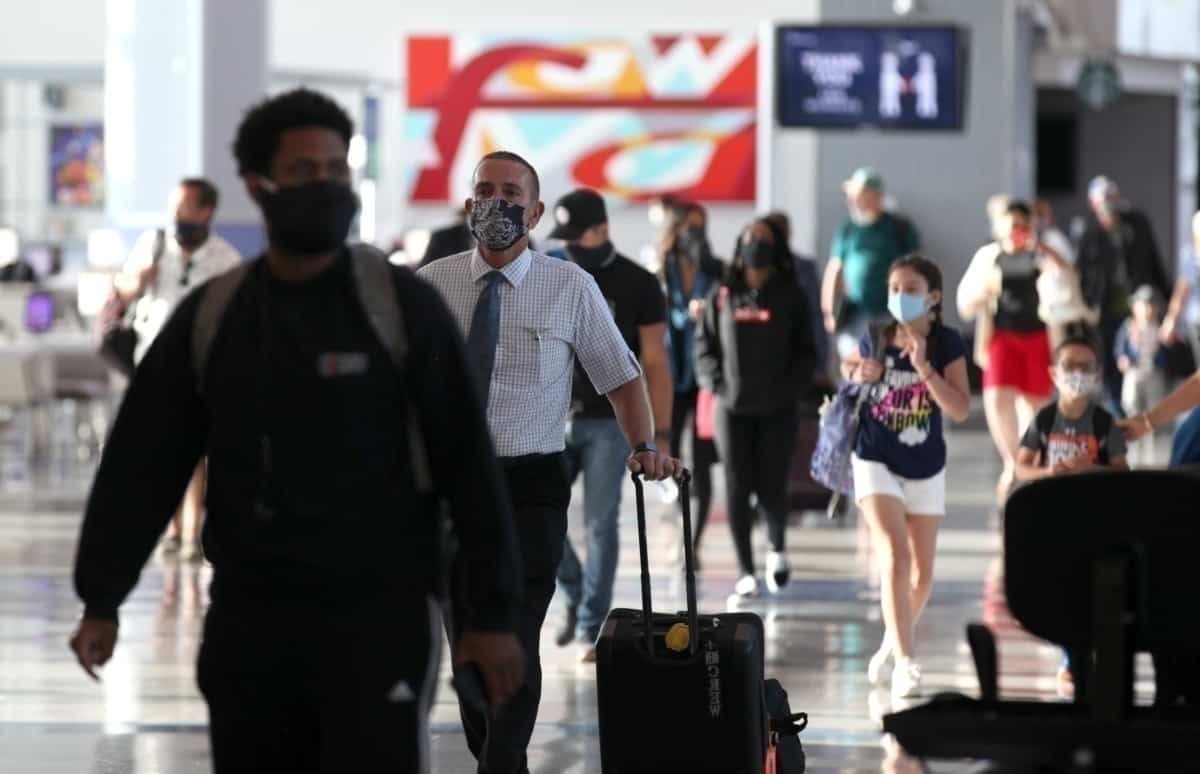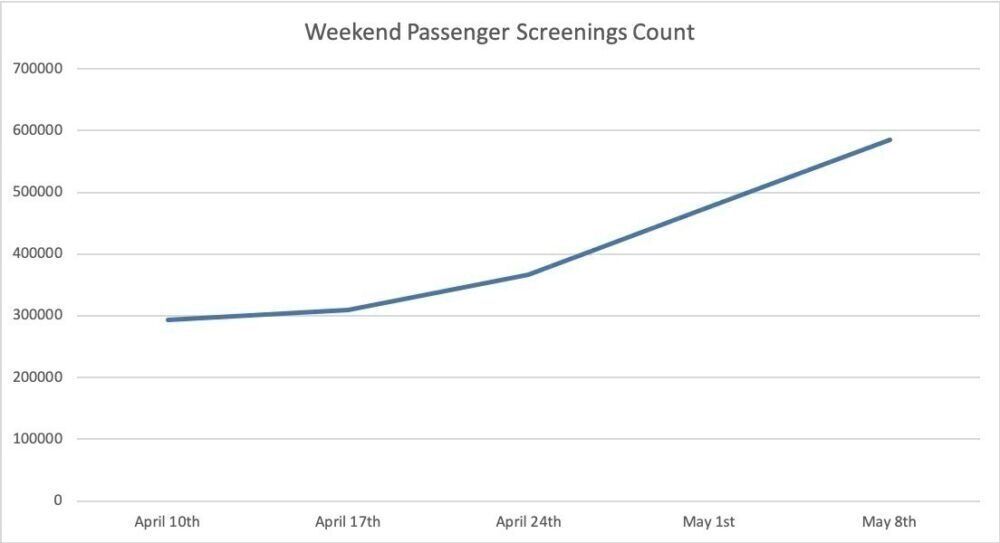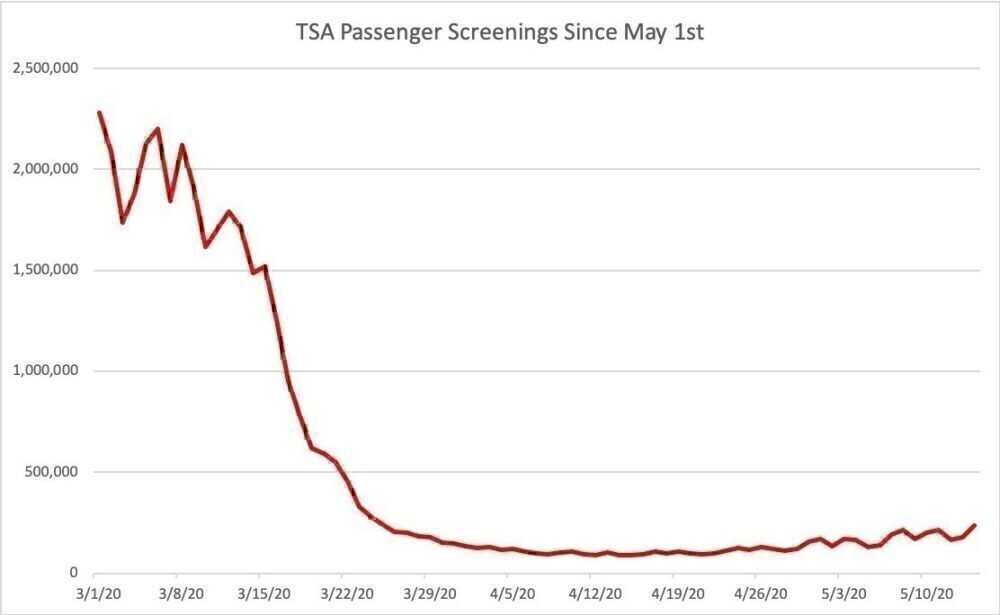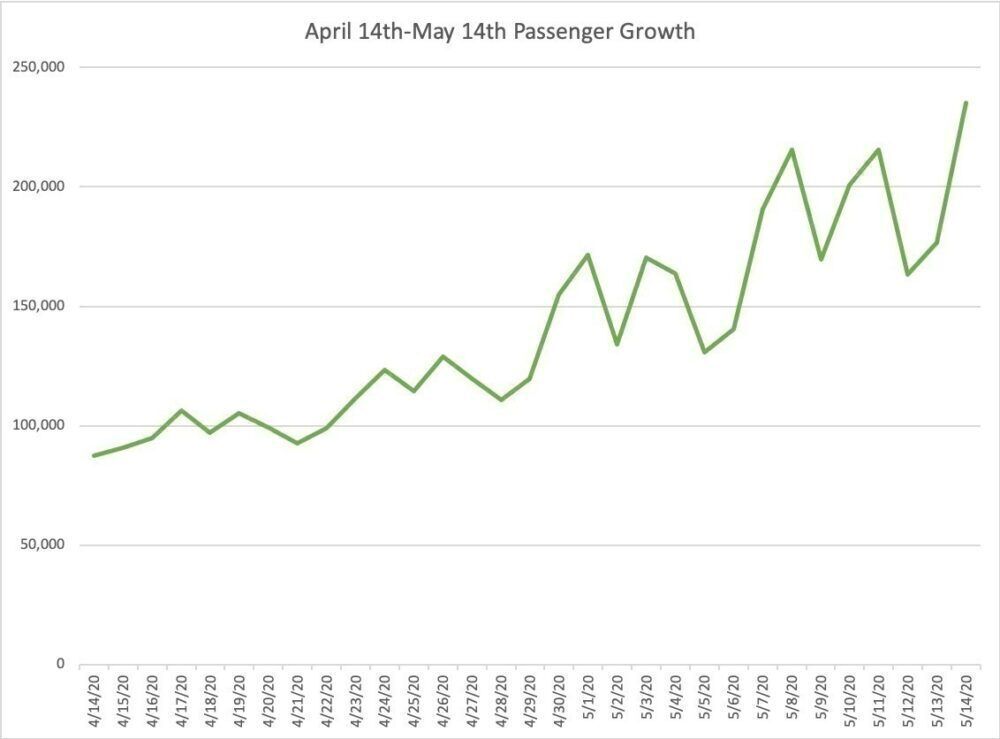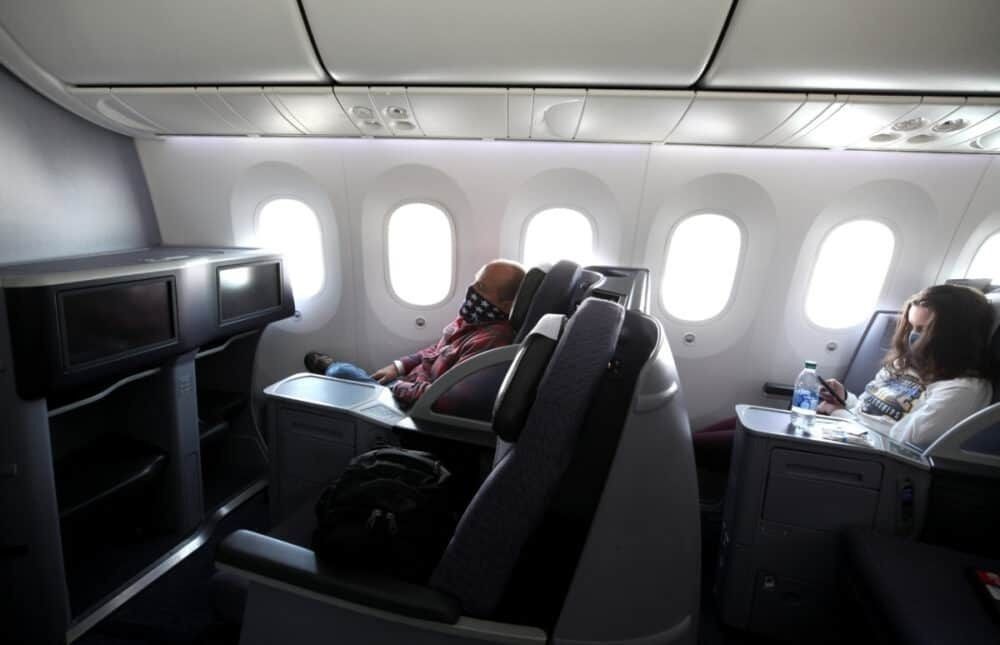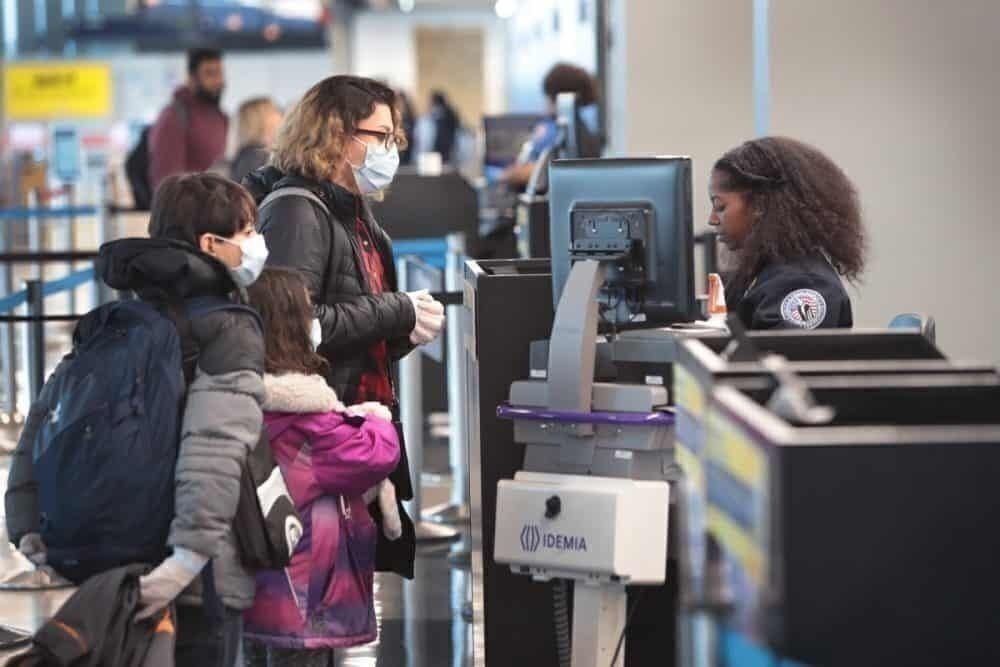The Transportation Security Administration (TSA) has recorded four straight weekends of passenger growth. Since cratering on April 10th, passenger numbers have steadily increased with passenger numbers last weekend reaching 585,000.
A steady increase in numbers
Fridays through Sundays are generally some of the busiest days for travel. Even in the midst of a global pandemic, weekend numbers have traditionally shown up higher than mid-week travel. As a sign of relief for the airline industry, passenger numbers have been trending upwards since the weekend of April 10th. Here are the passenger numbers for each weekend:
- April 10th: 293,123
- April 17th: 309,003
- April 24th: 366,798
- May 1st: 476,078
- May 8th: 585,839
Fridays and Sundays saw the greatest number of passengers each weekend. Below is a graph showing weekend-to-weekend growth in travelers:
The weekend-on-weekend growth is part of a larger trend of growing passenger numbers. Here is the full drop in passengers from March through to the slight increase we have seen in recent weeks.
Since April 14th, the TSA has noticed a relative increase in the number of passenger screenings, topping 200,000 screenings in one day on May 8th– the most since March 26th.
What does this mean for airlines?
Whereas weekday travel is usually supported by business, weekend travelers tend to lean more leisure passengers. After weeks with stay-at-home orders, perhaps people are starting to get out and see their country more.
Most businesses are staying cautious about traveling in the United States. With people working from home, teleconferences are taking over what used to be done via face-to-face meetings. If weekday and weekend numbers remain starkly different, it can tell a lot about which groups of people are traveling. Long-term, if weekday travel remains low, airlines might be feeling the pressure with fewer passengers flying in the forward cabins of the plane.
With passenger numbers increasing, more flights are starting to go out full. This is putting some pressure on airlines, which are now under pressure to practice social distancing and block out seats. Already, passengers are required to wear masks, as are TSA screeners.
What does this mean for passengers?
Passengers should continue to abide by local and airline regulations. Most airlines are requiring people to wear a mask while inflight. Some airports and cities are also mandating passengers to wear a mask at all times while on the ground. Passengers should be aware of their personal surroundings and also follow guidance from the staff on the ground.
Some passengers may even have to undergo temperature screenings either carried out by the airport or the airline.
Overall
More passengers are a good sign for airlines that have been battered by the current crisis. The coming weeks are going to provide further clues at how the US market is rebounding when it comes to air travel. One insightful period this month will be the upcoming Memorial Day weekend. It will be interesting to see how many passengers end up flying over that holiday weekend.
Do you have a trip planned in the coming weeks? What do you make of these increased passenger numbers? Let us know in the comments!

